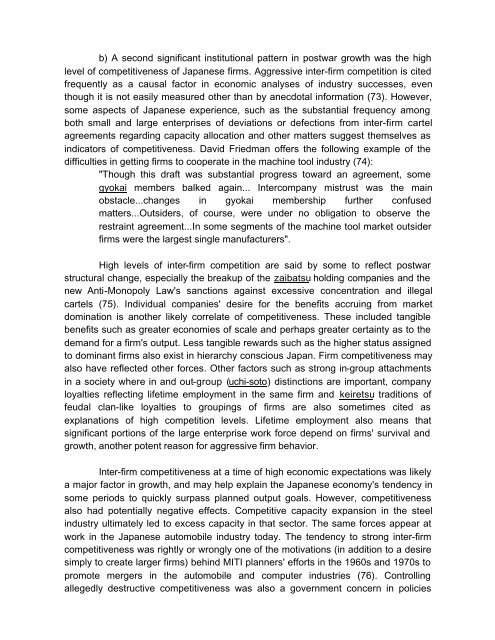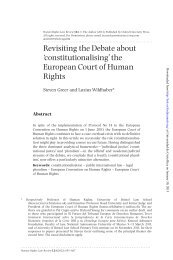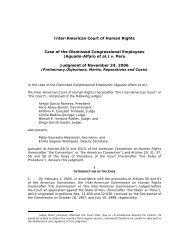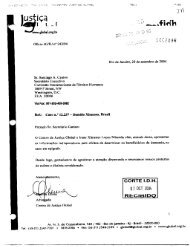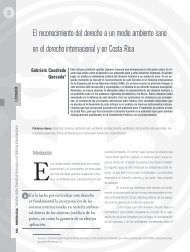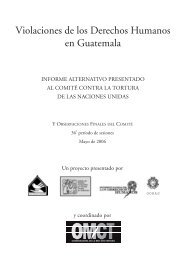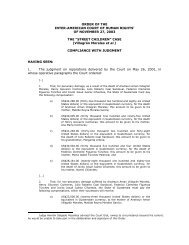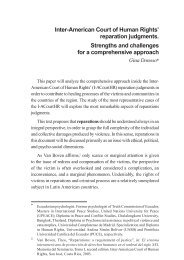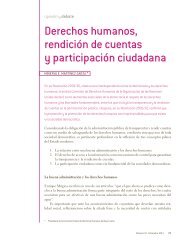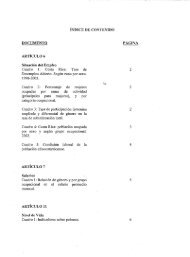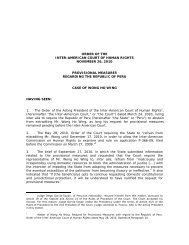The Political Economy of Japan Bradley M. RICHARDSON
The Political Economy of Japan Bradley M. RICHARDSON
The Political Economy of Japan Bradley M. RICHARDSON
- No tags were found...
Create successful ePaper yourself
Turn your PDF publications into a flip-book with our unique Google optimized e-Paper software.
) A second significant institutional pattern in postwar growth was the highlevel <strong>of</strong> competitiveness <strong>of</strong> <strong>Japan</strong>ese firms. Aggressive inter-firm competition is citedfrequently as a causal factor in economic analyses <strong>of</strong> industry successes, eventhough it is not easily measured other than by anecdotal information (73). However,some aspects <strong>of</strong> <strong>Japan</strong>ese experience, such as the substantial frequency amongboth small and large enterprises <strong>of</strong> deviations or defections from inter-firm cartelagreements regarding capacity allocation and other matters suggest themselves asindicators <strong>of</strong> competitiveness. David Friedman <strong>of</strong>fers the following example <strong>of</strong> thedifficulties in getting firms to cooperate in the machine tool industry (74):"Though this draft was substantial progress toward an agreement, somegyokai members balked again... Intercompany mistrust was the mainobstacle...changes in gyokai membership further confusedmatters...Outsiders, <strong>of</strong> course, were under no obligation to observe therestraint agreement...In some segments <strong>of</strong> the machine tool market outsiderfirms were the largest single manufacturers".High levels <strong>of</strong> inter-firm competition are said by some to reflect postwarstructural change, especially the breakup <strong>of</strong> the zaibatsu holding companies and thenew Anti-Monopoly Law's sanctions against excessive concentration and illegalcartels (75). Individual companies' desire for the benefits accruing from marketdomination is another likely correlate <strong>of</strong> competitiveness. <strong>The</strong>se included tangiblebenefits such as greater economies <strong>of</strong> scale and perhaps greater certainty as to thedemand for a firm's output. Less tangible rewards such as the higher status assignedto dominant firms also exist in hierarchy conscious <strong>Japan</strong>. Firm competitiveness mayalso have reflected other forces. Other factors such as strong in-group attachmentsin a society where in and out-group (uchi-soto) distinctions are important, companyloyalties reflecting lifetime employment in the same firm and keiretsu traditions <strong>of</strong>feudal clan-like loyalties to groupings <strong>of</strong> firms are also sometimes cited asexplanations <strong>of</strong> high competition levels. Lifetime employment also means thatsignificant portions <strong>of</strong> the large enterprise work force depend on firms' survival andgrowth, another potent reason for aggressive firm behavior.Inter-firm competitiveness at a time <strong>of</strong> high economic expectations was likelya major factor in growth, and may help explain the <strong>Japan</strong>ese economy's tendency insome periods to quickly surpass planned output goals. However, competitivenessalso had potentially negative effects. Competitive capacity expansion in the steelindustry ultimately led to excess capacity in that sector. <strong>The</strong> same forces appear atwork in the <strong>Japan</strong>ese automobile industry today. <strong>The</strong> tendency to strong inter-firmcompetitiveness was rightly or wrongly one <strong>of</strong> the motivations (in addition to a desiresimply to create larger firms) behind MITI planners' efforts in the 1960s and 1970s topromote mergers in the automobile and computer industries (76). Controllingallegedly destructive competitiveness was also a government concern in policies


